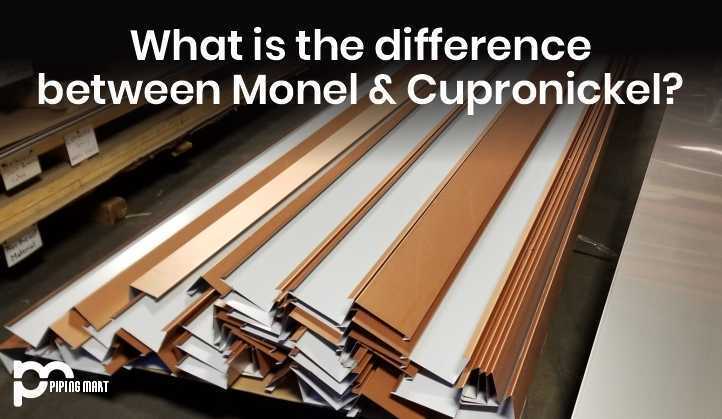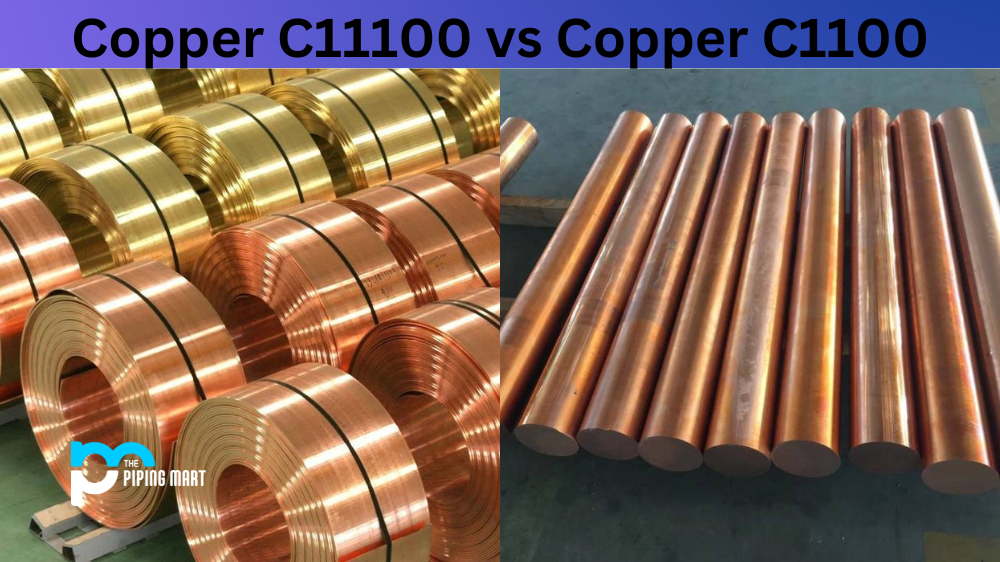Monel vs Cupronickel
Monel is an alloy made from the mixture of copper and nickel that is immune to high temperature sea water and wind, as well as salt and caustic solutions. Alloy is a solid solution alloy which can be hardened only by working cold. This nickel alloy has features such as strong resistance to corrosion, good weldability and high strength. The low erosion chance in quick streaming saltwater or seawater combined with remarkable resistance to push consumption splitting in many freshwaters and its flexibility to a scope of destructive conditions added to its broad use in sea-going applications and numerous non-oxidizing chloride arrangements. This nickel amalgam is particularly impervious to chlorinated and hydrofluoric acids when de-circulated air through. True to form from its high copper content, the nitric corrosive and alkali frameworks assault amalgam rapidly.
Cupronickel also seem to be alloys of moderate resistance and thermal stability at high temperature levels. These alloys’ strong oxidation tolerance is evident in hot air and vapor. Cupronickel alloys provide 2 to 30 % nickel, good tolerance to oxidation and tension resistant to corrosion cracking. The properties of the copper-nickel alloy vary with composition. Copper 90/10 and Copper 70/30 both exhibit excellent corrosion resistance, particularly sea water; however, Copper 70/30 is stronger and has superior corrosion resistance to impingement. On the other side, the 90/10 alloy shows a marginally better tolerance to biofouling.
Difference in Chemical Composition
When it comes to the composition element, Monel comprises 65-70 percent nickel, 20-29 percent copper and 5 percent iron and manganese. Cupronickel, on the other hand, is considered an alloy consisting of copper and nickel, and other reinforcing elements such as iron. Monel produces 63 per cent nickel in all alloys while Cupronickel comprises 30 per cent nickel.
Cupronickel is considered a team copper and nickel and can easily be used in saltwater environments due to its exceptional corrosion resistance characteristics. On the other hand, Monel is an alloy based on nickel; therefore, it is highly resistant to seawater, alkaline solutions and atmospheric corrosion, that’s why like copper nickel flanges and other products suits to various applications
Cupronickel and Monel have strong resilience and excellent tolerance to degradation in a broad variety of temperatures and conditions such as seawater, sulphuric acid and more. The nickel-chromium alloy has excellent oxidation resistance and is considered the best metal alloys to help products withstand high temperatures and environmental conditions.
Applications
Typically, both nickel-chromium alloy and nickel-copper alloy are used in intense heat applications as well as in high-temperature corrosion applications, although these two metals do have unique properties in varying circumstances.
For applications such as chemical production machines, crude petroleum stills, fresh water reservoirs, fuel and other applications Monel is an outstanding option. In particular, it can be widely used for applications in saltwater.
Nickel-copper alloy has a solid quality just as remarkable resilience to debasement in various applications, for example, hydrofluoric corrosive, saltwater, soluble base, sulfuric corrosive. Nickel-chromium combination additionally has great oxidation opposition and is the best metal to use in types of erosion at high temperatures. These uncommon highlights settle on nickel-copper the extraordinary decision for use in oil just as gas extraction. Oil boring, for the most part, includes unforgiving conditions, so it requires items that can withstand cruel conditions.

Pipingmart is B2B portal specializes in industrial, metal and piping products. Also, share latest information and news related to products, materials and different types grades to help business dealing in this industry.




